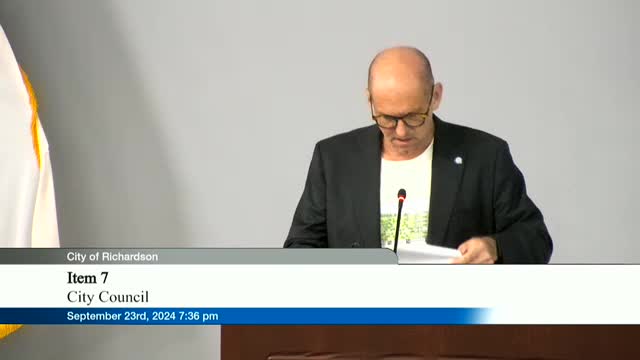Residents demand change as auto dealerships dominate Richardson landscape
September 23, 2024 | Richardson, Dallas County, Texas
This article was created by AI summarizing key points discussed. AI makes mistakes, so for full details and context, please refer to the video of the full meeting. Please report any errors so we can fix them. Report an error »

During a recent government meeting, discussions centered on land use productivity in Richardson, Texas, with a focus on the implications of zoning decisions and the efficiency of various property uses. A key presentation highlighted a land use productivity analysis for the city, comparing different types of land use, including automotive, retail, and mixed-use developments.
The analysis revealed that automotive uses, particularly major dealerships, ranked low in land use productivity. According to the data presented, 85% of automotive uses along the 75 corridor fell within the bottom 50% of productivity, with only one dealership making it into the top 25%. This finding sparked a debate about the future of land use in the area, emphasizing the need for more efficient zoning practices that prioritize higher productivity uses.
Elizabeth D'Amelio, a resident of the Cane Creek area, voiced her concerns regarding the proliferation of car dealerships in Richardson. She expressed a desire for the city to envision a more diverse and aesthetically pleasing landscape, particularly near parks and residential areas. D'Amelio criticized the existing automotive facilities for their negative impact on the environment and community, urging city officials to reconsider plans for new dealerships and instead explore alternative developments that align with the city's vision for a cleaner and more vibrant community.
The meeting underscored the tension between economic development and community aesthetics, as officials grappled with the implications of land use decisions on the quality of life for residents. The discussions highlighted a growing awareness of the need for strategic planning that balances economic interests with the preservation of community values.
The analysis revealed that automotive uses, particularly major dealerships, ranked low in land use productivity. According to the data presented, 85% of automotive uses along the 75 corridor fell within the bottom 50% of productivity, with only one dealership making it into the top 25%. This finding sparked a debate about the future of land use in the area, emphasizing the need for more efficient zoning practices that prioritize higher productivity uses.
Elizabeth D'Amelio, a resident of the Cane Creek area, voiced her concerns regarding the proliferation of car dealerships in Richardson. She expressed a desire for the city to envision a more diverse and aesthetically pleasing landscape, particularly near parks and residential areas. D'Amelio criticized the existing automotive facilities for their negative impact on the environment and community, urging city officials to reconsider plans for new dealerships and instead explore alternative developments that align with the city's vision for a cleaner and more vibrant community.
The meeting underscored the tension between economic development and community aesthetics, as officials grappled with the implications of land use decisions on the quality of life for residents. The discussions highlighted a growing awareness of the need for strategic planning that balances economic interests with the preservation of community values.
View full meeting
This article is based on a recent meeting—watch the full video and explore the complete transcript for deeper insights into the discussion.
View full meeting
